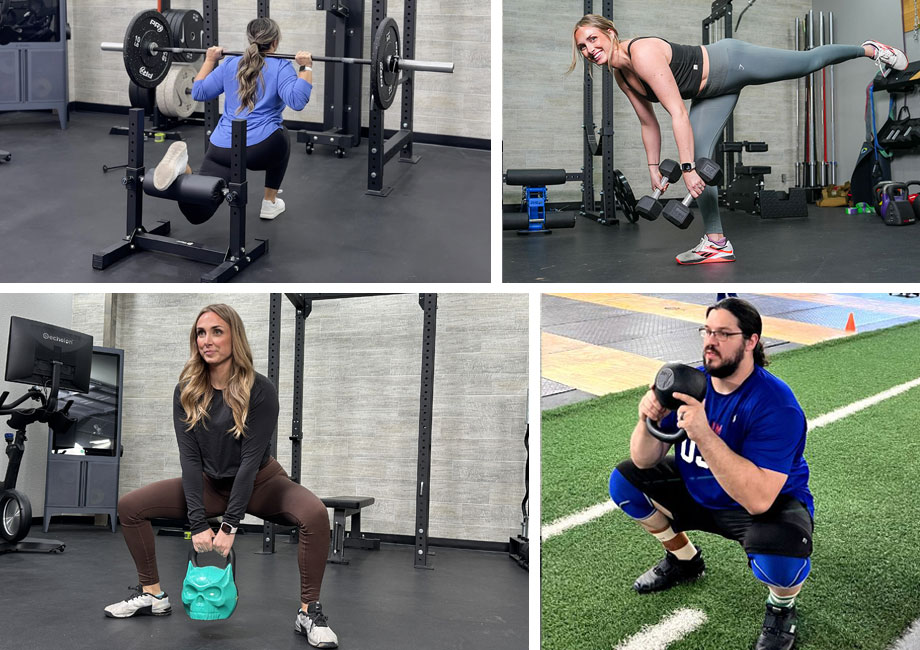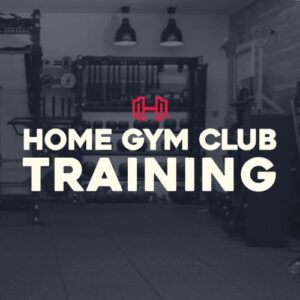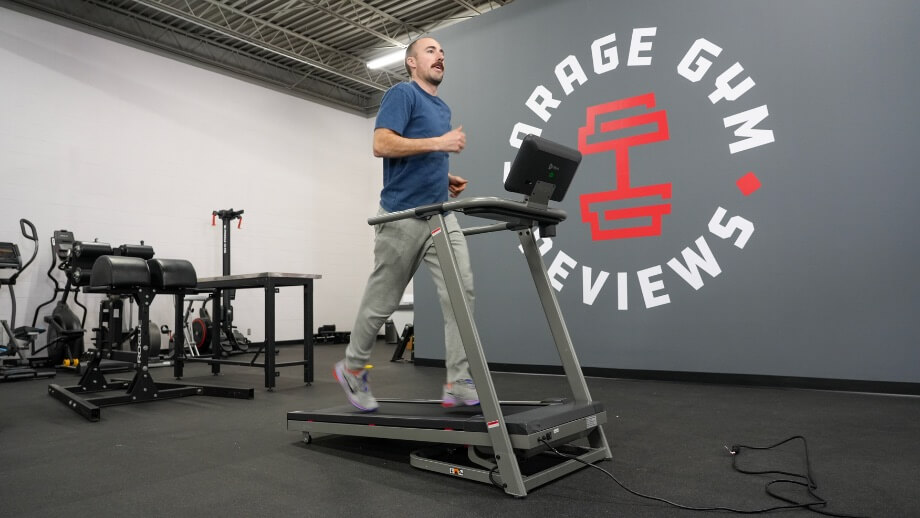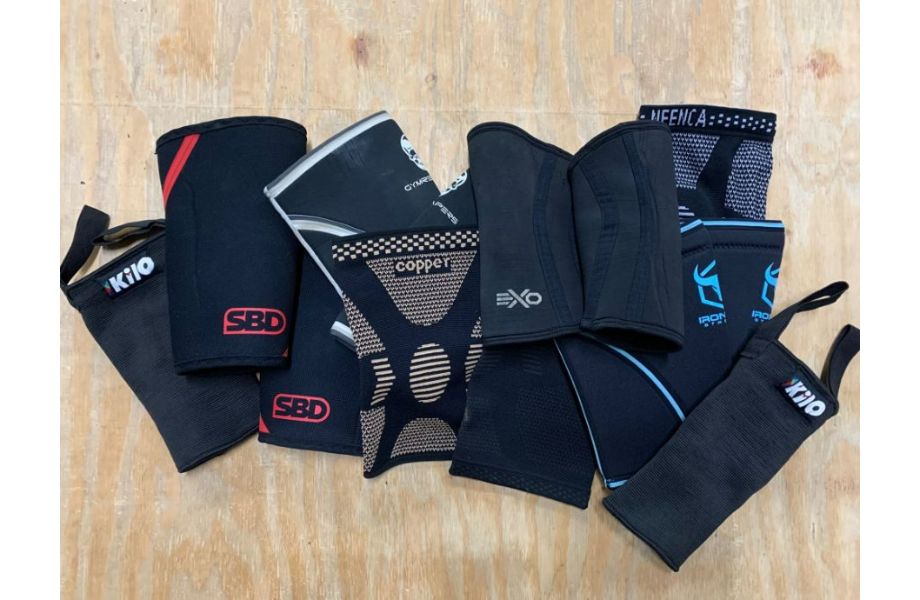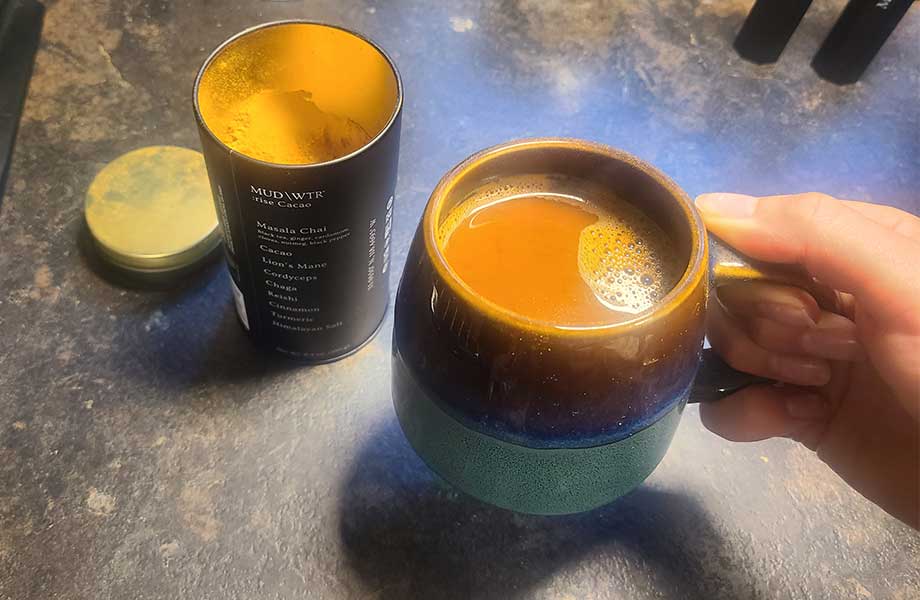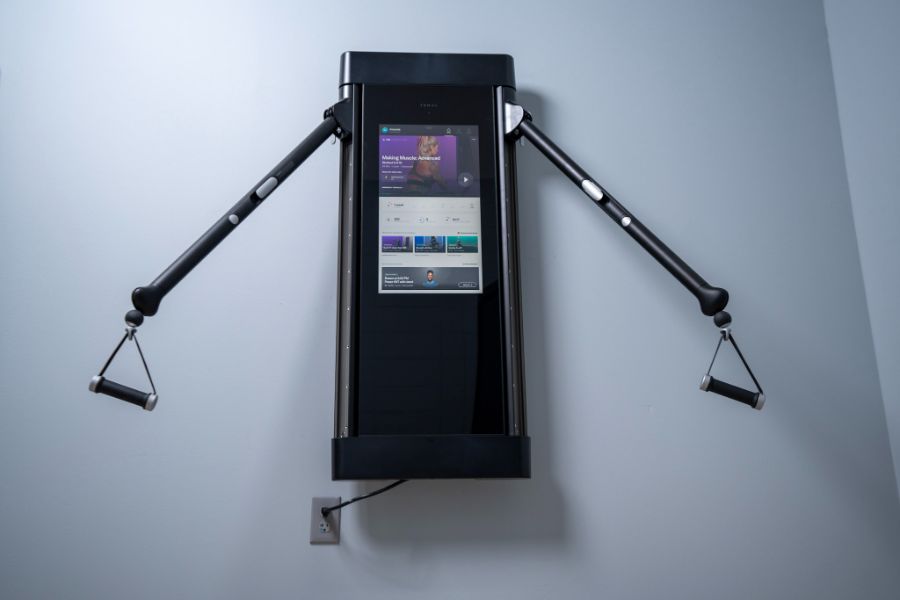The lunge exercise is one of the best lower-body exercises you can have at your disposal. They’re simple to learn, require no equipment to perform, and target nearly all lower-body muscle groups for strength gains, muscular hypertrophy, and enhanced mobility in your back, hips, and legs.
Lunges make an excellent addition to any leg day workout, but they’re far from the only move worth doing. Whether you’re medically contraindicated or simply want something else to flesh out your programming, you’ll want to have a surplus of suitable lunge alternatives for every circumstance.
That’s exactly what we have in store for you. Kate Meier, NASM-CPT, USAW-L1, CF-L1, and GGR senior director of content, shares the top 10 best lunge alternatives, step-by-step instructions, benefits, and more!
10 Best Lunge Alternatives
- Bulgarian split squat
- Split squat
- Goblet squat
- Kettlebell sumo deadlift
- Box squat
- Reverse lunge
- Lateral lunge
- Single-leg press
- Single-leg deadlift
- Step-up
Bulgarian Split Squat
Muscles worked: Quadriceps, glutes, hip adductors, hamstrings, calves, core
Benefits: The Bulgarian split squat makes a great lunge alternative, as both are unilateral exercises that let you tackle your lower-body strength training one leg at a time. According to the International Journal of Exercise Science1, the Bulgarian split squat may also offer similar benefits as the back squat “while minimizing the knee joint demands.”
How to do it:
- Stand with a flat weight bench (or other flat surface) behind you.
- Place the top of one foot on the bench.
- Slowly bend your front knee to squat until it forms a 90-degree angle.
- Pause, then push through your front heel to return to the starting position.
- Complete your desired number of reps, then switch sides and repeat the set.
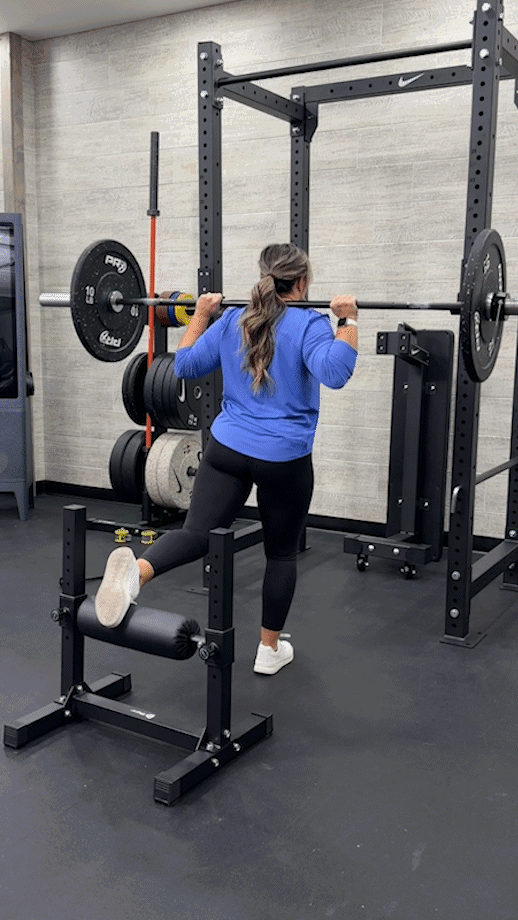
Modifications
- Dial it back: Perform the standard split squat instead.
- Make it harder: Perform your BSS with a barbell, kettlebell, or dumbbells.
RELATED: Unilateral Exercises
Split Squat
Muscles worked: Quadriceps, glutes, hip adductors, hamstrings, calves, core
Benefits: Intimidated by the Bulgarian split squat above? Try the standard split squat. “The split squat offers the same benefits as the Bulgarian split squat, but it’s more beginner-friendly since both feet stay planted on the floor,” says Kate Meier, NASM-CPT, USAW-L1, CF-L1. “It’s a great addition to any leg day workout, but it’s especially useful as a lunge or Bulgarian split squat alternative.”
How to do it:
- Step back with your right foot to enter a split stance.
- Slowly bend both of your knees to squat, keeping your chest tall, core tight, and back straight.
- Continue until your back knee lightly touches the ground.
- Drive through your right heel to stand back up.
- Complete your desired number of reps, then repeat the set with your left foot behind you.
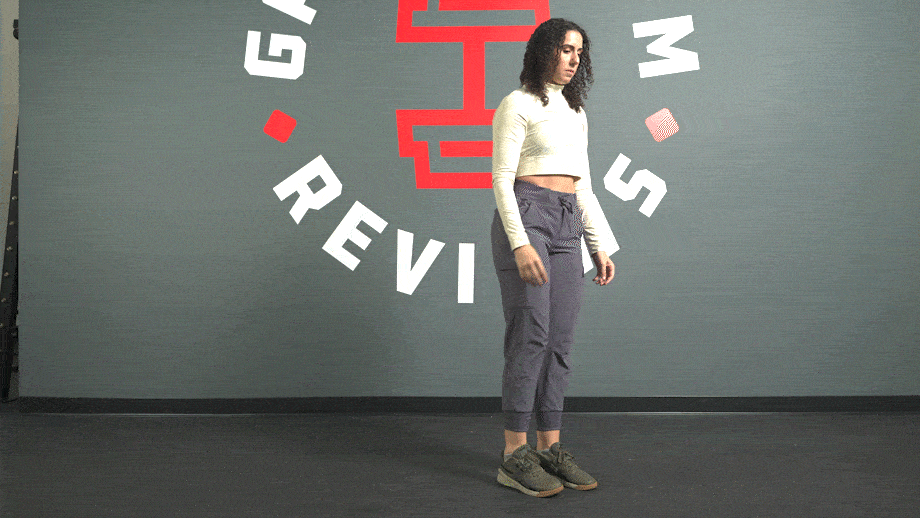
Modifications
- Dial it back: Substitute with regular bodyweight squats or reverse lunges.
- Make it harder: Progress to the Bulgarian split squat or add free weights.
Goblet Squat
Muscles worked: Quadriceps, glutes, calves, hamstrings, core
Benefits: Like most squat variations, the goblet squat emphasizes your quads. But, because you’re holding the weight in front of your chest, there’s greater activation in your upper body and core muscles, making the goblet squat an intuitive addition to both leg and full-body workouts. Bonus: You’ll also be improving your grip strength.
How to do it:
- Select your weight (a kettlebell or dumbbell both work well) and hold it in front of your chest.
- Stand with your feet shoulder-width apart.
- Brace your core, push your hips back, and bend your knees to squat.
- Continue until your thighs are nearly parallel with the floor.
- Pause, then drive through your heels to stand back up.
- Repeat for reps.
RELATED: Best Kettlebells
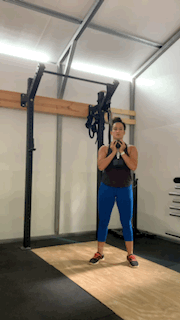
Modifications
- Dial it back: Perform a standard bodyweight squat instead.
- Make it harder: Grab a barbell and perform front squats.
Kettlebell Sumo Deadlift
Muscles worked: Glutes, lower back, quadriceps, hamstrings, adductors, core
Benefits: The deadlift is one of the greatest compound exercises, so it only makes sense that the sumo deadlift would be just as effective. The sumo deadlift is friendlier on your lower back, allows you to lift from a more stable position, and, according to PLoS One2, targets your quads with more intensity than the conventional deadlift.
How to do it:
- Select a kettlebell and place it on the ground in front of you.
- Place your feet in a wide stance (feet outside shoulder-width).
- Push your hips back and lower your chest to hinge forward.
- Bend your knees and reach down to grip the kettlebell handle.
- Brace your core and drive through your heels to stand up.
- Bring your hips to full extension and squeeze your glutes.
- Reverse the motion to return the kettlebell to the floor.
- Repeat for reps.
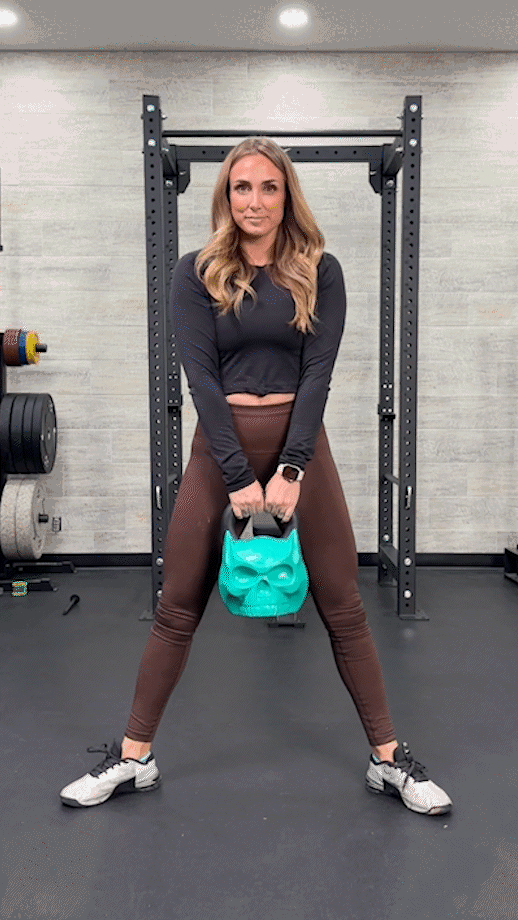
Modifications
- Dial it back: Perform the good morning exercise to practice your hip hinge.
- Make it harder: Switch to a heavy barbell or trap bar.
Box Squat
Muscles worked: Glutes, quadriceps, hamstrings, hip abductors, calves, core
Benefits: Separating the concentric and eccentric phases of the squat using a plyometric box lets you really focus on stabilizing the weight and moving with proper form. Also, according to the Journal of Strength and Conditioning Research3, the box squat may be easier on the knee joint versus the traditional squat.
How to do it:
- Adjust your squat rack and load your barbell to the desired weight.
- Place a plyo box a few feet away from the rack.
- Stand with your feet shoulder-width apart, chest tall, and back straight.
- Unrack the bar across your upper back and shoulders, then take a big step back.
- Push your hips back and bend your knees to squat.
- Continue until you are sitting on the plyo box.
- Pause, then drive through your heels to stand back up.
- Bring your hips to full extension and squeeze your glutes.
- Repeat for reps, then rerack the weight.
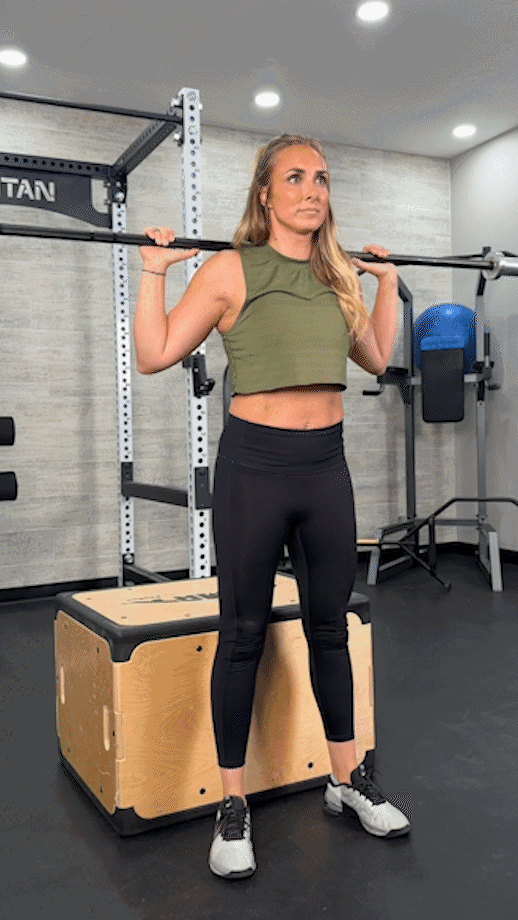
Modifications
- Dial it back: Perform a bodyweight box squat.
- Make it harder: Remove the box and perform a tempo back squat.
RELATED: Tempo Training
Reverse Lunge
Muscles worked: Glutes, quadriceps, hamstrings, calves, core
Benefits: According to Physical Therapy in Sport4, the reverse lunge variation may benefit individuals with knee pain because the loading and stress demands on the knee joint are comparatively less than the forward lunge or walking lunge.
How to do it:
- Stand with your feet hip-width apart.
- Take a big step back with your left leg, bending both knees as you move.
- Continue until both knees are bent at a 90-degree angle and hold.
- Drive through your front heel and step your back leg back to center.
- Repeat the above steps, this time stepping back with your right leg.
- Alternate sides for each rep until you finish the set.
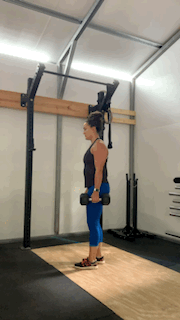
Modifications
- Dial it back: Perform the reverse lunge while holding onto something sturdy, like a chair or the wall.
- Make it harder: Perform the reverse lunge with your choice of free weights.
Lateral Lunge
Muscles worked: Quadriceps, hip abductors, glutes, hamstrings, calves
Benefits: The lateral lunge—aka the side lunge—involves side-to-side rather than front-to-back movement. Because of this, you should develop more hip mobility since the positioning forces a contraction of the abductors on each rep.
How to do it:
- Hold a single kettlebell or dumbbell and stand with your feet hip-width apart. (You can also perform this exercise with just your body weight.)
- Step to your left, leaning into your left knee as your right leg extends..
- Pause, then drive your left foot into the floor and step it back to center.
- Repeat the movement using your right foot.
- Alternate sides until the set is complete.
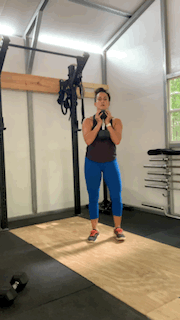
Modifications
- Dial it back: Perform hip flexor exercises to open your hips more and improve mobility before attempting the lateral lunge.
- Make it harder: Incorporate a resistance band or perform skater jumps for a cardio lift.
Single-Leg Press
Muscles worked: Quadriceps, glutes, hamstrings, calves
Benefits: “The leg press is a beginner-friendly alternative to the back squat, targeting many of the same muscles while using a machine to ensure proper form,” says Kate. “Using the machine makes unilateral training easier as well, allowing you to correct muscle imbalances and bilateral strength deficits more easily.”
How to do it:
- Adjust a leg press machine to your specifications, set it to your desired weight, and sit with your back pressed against the pad and your hands gripping the handles.
- Place both feet on the foot plate, keeping a slight bend in your knees.
- Release the safety catch, stabilize, and remove one foot from the plate.
- Slowly bend your working knee until it forms a 90-degree angle.
- Pause, then push the plate back to the starting position.
- Repeat for reps, then repeat the set using your opposite leg.
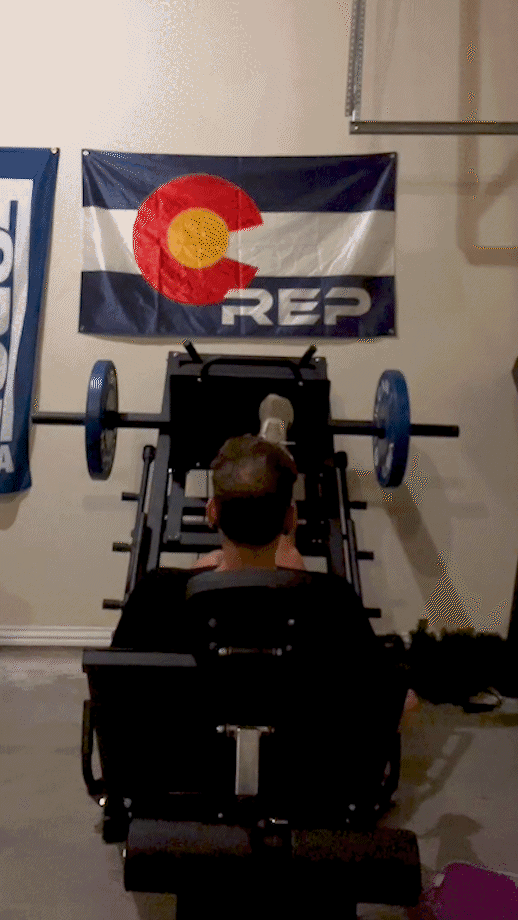
Modifications
- Dial it back: Perform a standard leg press exercise with both feet.
- Make it harder: Perform a barbell back squat or bodyweight pistol squat.
RELATED: How To Do a Leg Press At Home
Single-Leg Deadlift
Muscles worked: Glutes, hamstrings, lower back, calves, core
Benefits: Sure, the regular ranks as one of the best leg and back exercises of all time, but according to the International Journal of Exercise Science5, the single-leg deadlift “is preferable to the [deadlift] in training the [biceps femoris] and [gluteus medius].” Plus, working one leg at a time helps correct muscle imbalances, which could reduce your risk of injury.
How to do it:
- Place a barbell on the floor and load it to your desired weight.
- Stand behind your barbell with your front foot positioned behind the bar’s center.
- Step back with your other foot, lightly touching the floor with your toes.
- Hinge forward, bend your front knee, and lower your chest so you can grip the barbell with a double overhand grip. Your rear leg should rise behind you as you move.
- Drive through the heel of your front leg, extending your knee and hips, to stand.
- Reverse the movement to return to the bottom position.
- Repeat for reps, then switch sides and repeat the set.
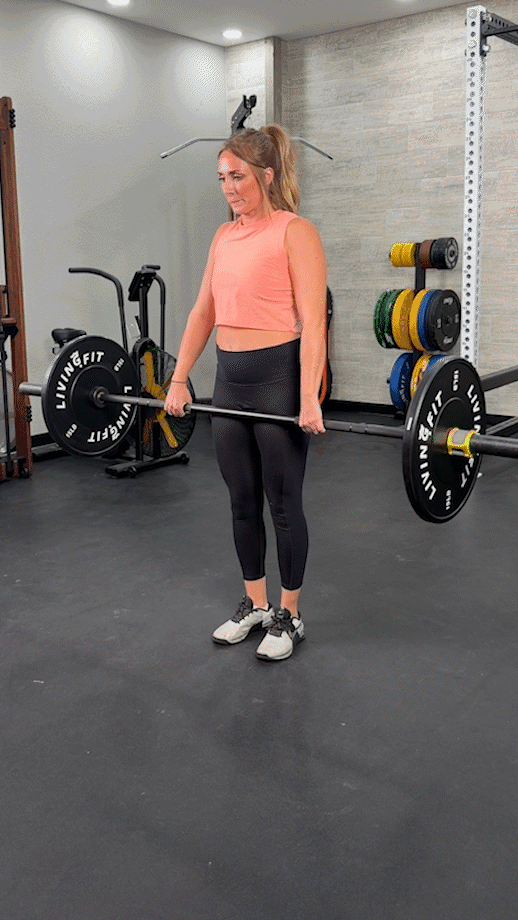
Modifications
- Dial it back: Perform single-leg toe touches instead to practice balance.
- Make it harder: Perform a deficit single-leg deadlift to increase the range of motion.
Step-Up
Muscles worked: Quadriceps, hamstrings, glutes, calves
Benefits: “The step-up exercise is the total package in many ways,” says Kate. “It produces activation in all of the major lower-body muscle groups, is simple to learn and master, and can be scaled to make it more challenging as you progress.”
How to do it:
- Place a flat weight bench or plyometric box in front of you.
- Step onto the bench (or box) with your right foot, bending your right knee at 90 degrees.
- Push through your right foot, lift your left foot into the air, and slowly extend your right knee.
- Place your left foot down on the bench or box once your right knee is fully extended.
- Step back down to the floor with one leg at a time. You may step down with your right or left leg first, but be consistent throughout your set.
- Repeat for reps.
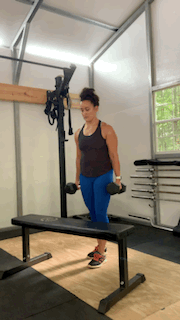
Modifications
- Dial it back: Reduce the height of your step-up platform or move at a slower pace.
- Make it harder: Increase your step-up height, incorporate weights, or drive your knee into the air as you step up for added intensity.
Sample Lunge Alternative Workouts
Our lunge alternatives are great as standalone exercises but, like cogs in a machine, work best when combined. Don’t worry; we’ve done all the leg work for you by programming a few sample lunge alternative workouts for different goals.
Leg Workout for Beginners
“For this beginner workout, you’re going to focus on practicing proper form in order to build a strong foundation,” says Kate Meier, NASM-CPT, USAW-L1, CF-L1. “So, you’re doing a moderate number of sets and reps, using minimal weight, and taking as much rest as you need.”
| Exercise | Sets | Reps |
| Split squat | 3 | 8-12 |
| Reverse lunge | 3 | 8-12 |
| Box squat | 3 | 8-12 |
| Step-up | 3 | 8-12 |
Equipment needed: Light dumbbells, kettlebells, or a resistance band, but can be done with no equipment
Leg Workout for Strength
“Workouts designed to maximize strength gain often use a low rep scheme and heavy weights, so that’s what we’re incorporating here,” says Kate. “Make sure you’re well rested before each set, because you should be working with weights that are truly challenging.”
| Exercise | Sets | Reps |
| Barbell bulgarian split squat | 3-5 | 5 |
| Kettlebell sumo deadlift | 3-5 | 5 |
| Kettlebell goblet squat | 3-5 | 5 |
| Single-leg leg press | 4-8 | 5 |
Equipment needed: Barbell, weight plates, weight bench, kettlebell, leg press machine
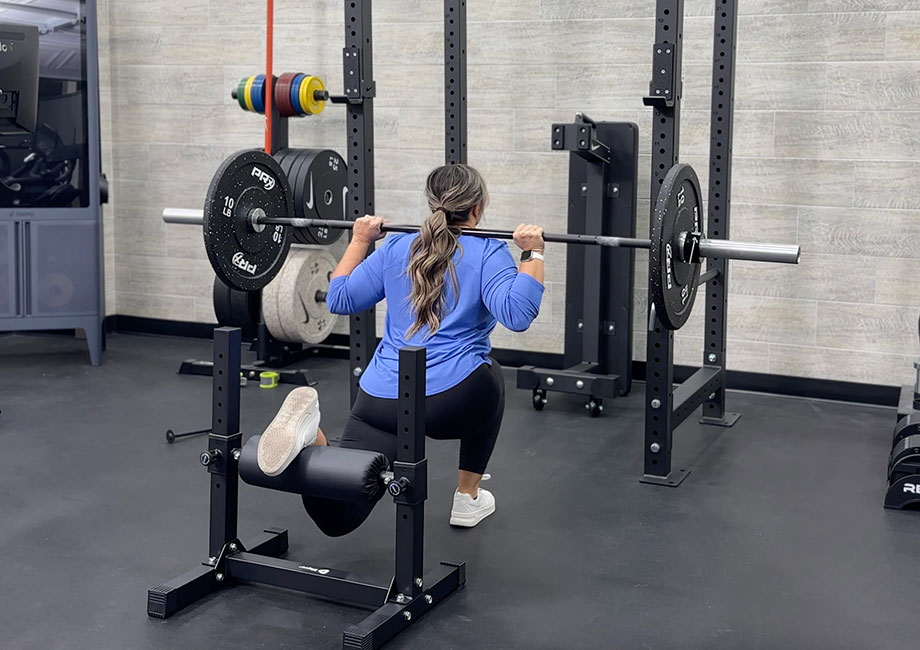
RELATED: What Is Progressive Overload?
Leg Workout for Hypertrophy
“Hypertrophy workouts, unlike strength-focused programs, don’t require you to max out by the end of your working sets,” says Kate. “Instead, you’re lifting more in the 60% to 75% of your one-rep max range using a moderate number of sets and reps.”
| Exercise | Sets | Reps |
| Barbell bulgarian split squat | 3-6 | 6-12 |
| Barbell single-leg deadlift | 3-6 | 6-12 |
| Reverse lunge | 3-6 | 12-20 |
| Single-leg leg press | 4-8 | 6-12 |
Equipment needed: Barbell, weight plates, weight bench, leg press machine
Benefits of Lunge Alternatives
Loads of leg day haters loathe lunges—say that five times fast—but there’s no denying they’re among the best leg exercises. So, if that’s the case, why bother with lunge alternatives? Here’s why:
More Variety
Sure, some lifters thrive on repetitive routines. They’re happy eating chicken and rice for every meal, going to bed at the same time every evening, and performing the same exercises each week like clockwork.
We’d never disparage those dedicated individuals, but some of us need a little more to keep coming back. Variety is the spice of life. Without it, your motivation can wane, and before you know it, your progress stalls.
Lunge alternatives keep your routine fresh, but that’s not all. According to the Journal of Strength and Conditioning Research6, systematically varying your exercise selection “seems to enhance regional hypertrophic adaptations and maximize dynamic strength.”
So, it’s not just for your sanity; it’s for the gains, too.
May Enhance Lunge Performance
One of the best ways to improve your lunge technique is by actually performing lunge exercises or lunge variations, but using lunge alternatives can also help in this endeavor.
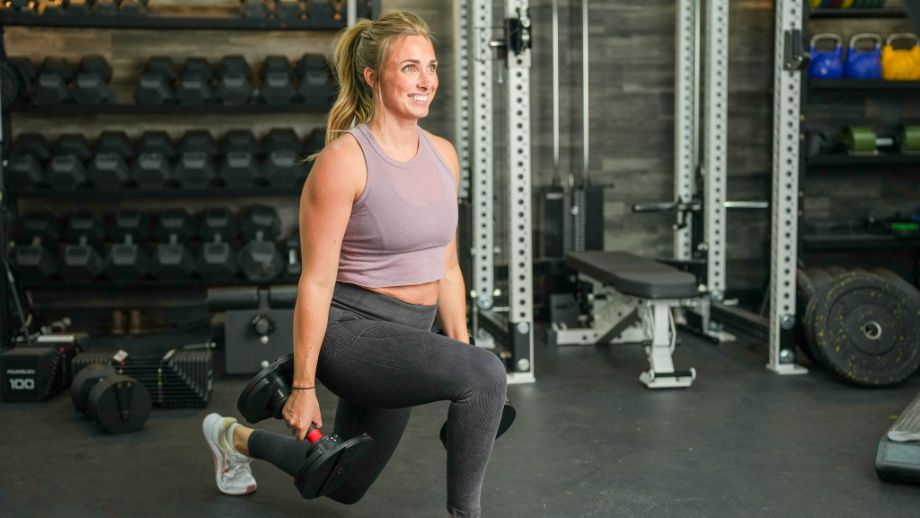
“The main thing lunge variations have in common is that they all target the lower-body muscles to varying degrees,” says Kate Meier, NASM-CPT, USAW-L1, CF-L1. “So, gaining strength and proficiency with the split squat or single-leg deadlift, for example, should strengthen the same muscles you use for lunges, meaning your next set of lunges may feel easier.”
RELATED: What Muscles Do Lunges Work?
May Be Easier on Your Knees
When performed correctly, the lunge exercise helps strengthen your knee joint and the surrounding muscles. However, performing lunges with poor form may place stress on your patellofemoral joint—the joint between your thigh bone and knee cap—causing or contributing to knee pain and other adverse effects.
It’s possible to mitigate this risk by practicing proper form and technique to ensure you’re not overloading your knees, but many of our lunge alternatives already provide an answer to this dilemma without requiring you to perfect your technique.
Lunge alternatives give you options that may be friendlier on your knees, so you can learn how to do lunges properly at your own pace while still getting a great leg workout.
Lunge Alternatives: Final Thoughts
The lunge wouldn’t be used in so many programs if it wasn’t one heck of a move, but fitness is not about doing the same exercise over and over again. Well, it is, hence the use of “repetitions,” but it’s about more than just that.
To recap:
- Lunge alternatives provide activation to the same muscle groups that are targeted by the lunge exercise and lunge variations.
- Lunge alternatives allow you to supplement your leg strength training with moves you can use instead of lunges or alongside lunges for a comprehensive program.
- Using lunge alternatives to increase exercise variety may result in greater gains.
- Many lunge alternatives put less stress on the knee joint, making them ideal for those who must work around knee pain or conditions that affect the knee.
We’re not pulling your leg here; these lunge alternatives can benefit your lower-body strength training, so you’ll make progress on your fitness goals as soon as your next leg day. Until next time, fitness fam!
Lunge Alternatives: FAQs
What is the easier version of lunges?
The easiest version of the lunge exercise depends on your personal strengths and weaknesses, but most people find the reverse lunge variation to be among the easiest.
To make this variation even easier, consider holding a sturdy object for support when stepping your foot back. This eliminates the balance challenge.
RELATED: Balance Exercises
How to do lunges if you have bad knees?
“Lunges get a bad rap as being bad for your knees, but they’re actually very good for your knee joint if performed with proper form,” says GGR Senior Director of Content Kate Meier, NASM-CPT, USAW-L1, CF-L1. “The key is not to let your knee track past your toes. Keep your knee in line and vertically stacked directly above your toes, and you’ll minimize the stress on your knee joint.”
Additionally, studies show4 that the reverse lunge is easier on the knee joint, making it the preferred lunge variation for those with nagging knee pain.
How can I work my legs without lunges?
There are plenty of leg exercises that you can include in your leg workout without even doing a single lunge. Many of our above lunge alternatives will work for this purpose, but here’s a short list of some other great leg exercises:
-Barbell back squat
-Barbell deadlift
-Romanian deadlift
-Leg press
-Leg extension
-Leg curl
-Glute bridge
-Barbell hip thrust
-Pistol squat
There are plenty of ways to target the lower-body muscles without doing lunges. If you’re in need of some more “fitspiration,” check out all our training content here at Garage Gym Reviews, or consider working with a certified personal trainer.
RELATED: Best Online Personal Trainer
References
1. Mackey ER, Riemann BL. Biomechanical Differences Between the Bulgarian Split-Squat and Back Squat. Int J Exerc Sci. 2021;14(1):533-543. Published 2021 Apr 1.
2. Martín-Fuentes I, Oliva-Lozano JM, Muyor JM. Electromyographic activity in deadlift exercise and its variants. A systematic review. PLoS One. 2020;15(2):e0229507. Published 2020 Feb 27. doi:10.1371/journal.pone.0229507
3. Swinton PA, Lloyd R, Keogh JW, Agouris I, Stewart AD. A biomechanical comparison of the traditional squat, powerlifting squat, and box squat. J Strength Cond Res. 2012;26(7):1805-1816. doi:10.1519/JSC.0b013e3182577067
4. Goulette D, Griffith P, Schiller M, Rutherford D, Kernozek TW. Patellofemoral joint loading during the forward and backward lunge. Phys Ther Sport. 2021;47:178-184. doi:10.1016/j.ptsp.2020.12.001
5. Diamant W, Geisler S, Havers T, Knicker A. Comparison of EMG Activity between Single-Leg Deadlift and Conventional Bilateral Deadlift in Trained Amateur Athletes – An Empirical Analysis. Int J Exerc Sci. 2021;14(1):187-201. Published 2021 Apr 1.
6. Kassiano W, Nunes JP, Costa B, Ribeiro AS, Schoenfeld BJ, Cyrino ES. Does Varying Resistance Exercises Promote Superior Muscle Hypertrophy and Strength Gains? A Systematic Review. J Strength Cond Res. 2022 Jun 1;36(6):1753-1762. doi: 10.1519/JSC.0000000000004258. Epub 2022 Apr 1. PMID: 35438660.


